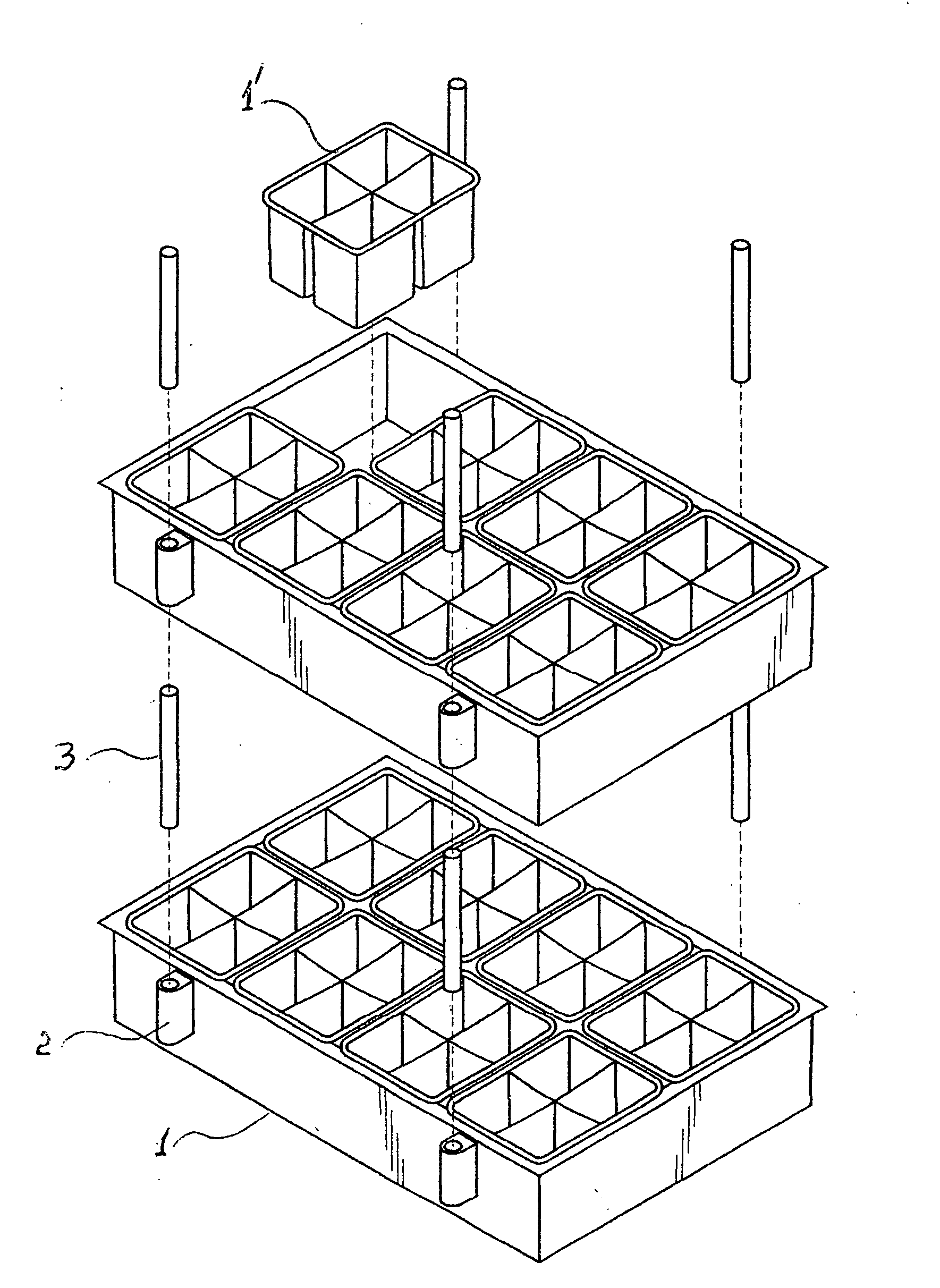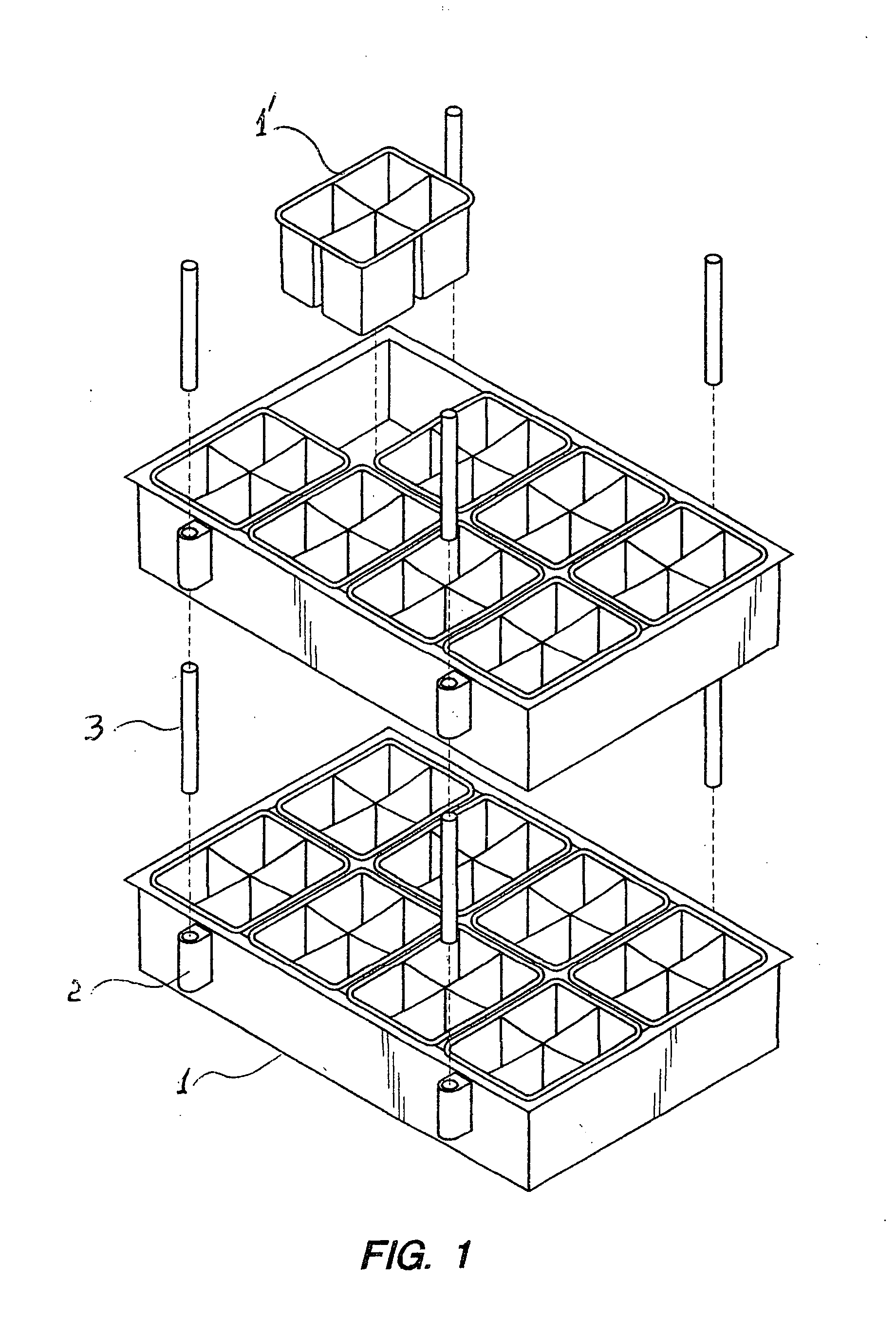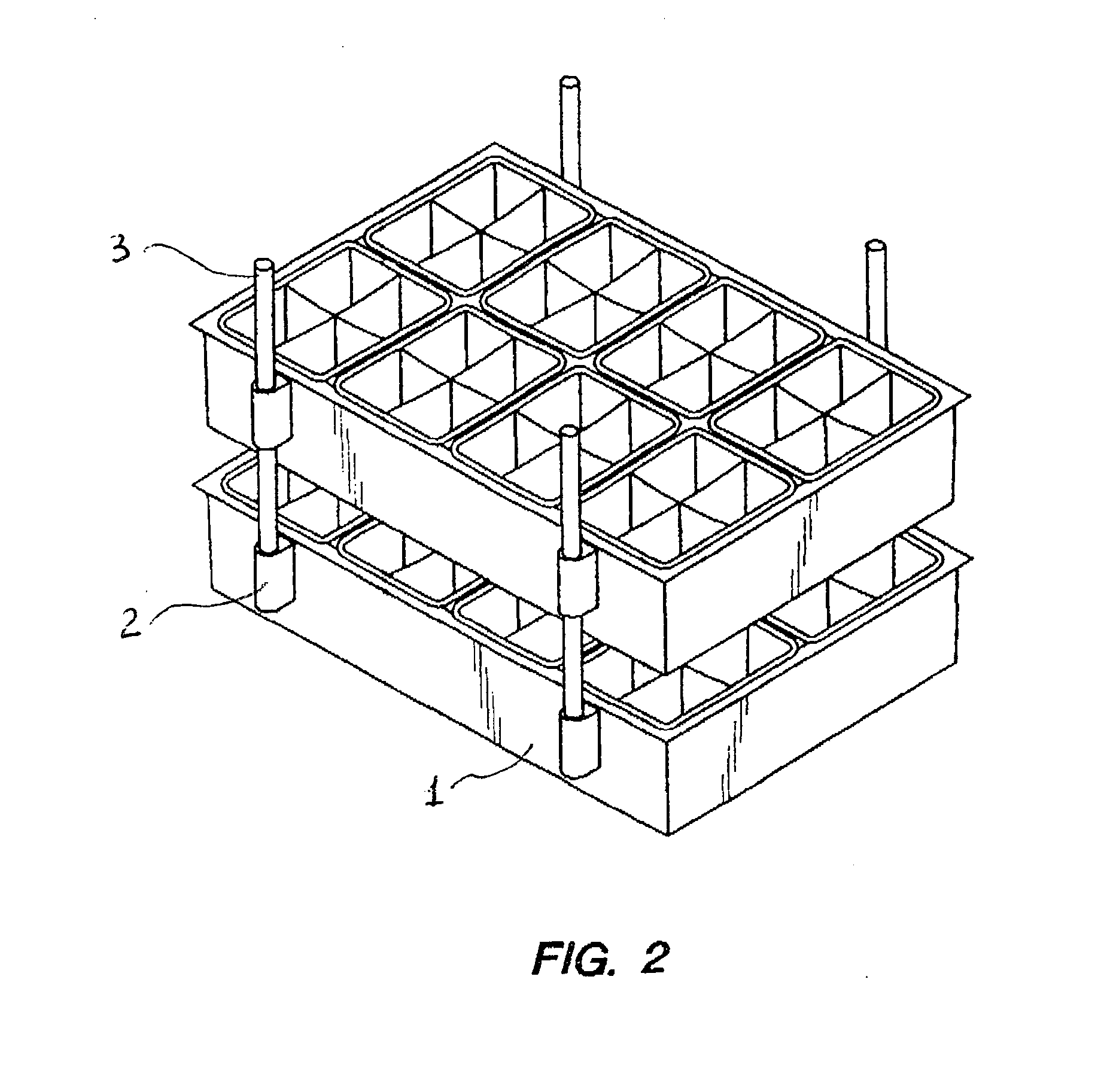Stackable nursery trays for plants
a technology for plants and trays, applied in the field of trays for plants, can solve the problems of limited space where the trays are located, difficult to use, expensive, etc., and achieve the effect of saving plants
- Summary
- Abstract
- Description
- Claims
- Application Information
AI Technical Summary
Benefits of technology
Problems solved by technology
Method used
Image
Examples
Embodiment Construction
[0025]While the invention may be susceptible to embodiment in different forms, there are shown in the drawings, and will be described in detail herein, specific exemplary embodiments of the present invention, with the understanding that the present disclosure is to be considered an exemplification of the principles of the invention, and is not intended to limit the invention to that as illustrated and described herein.
[0026]A preferred embodiment of the inventive device in a dissembled state is illustrated on FIG. 1, and comprises at least two identical trays (1), each made in a rectangular shape, and each containing a plurality of rectangular cells, such as a cell (1′) depicted separately, wherein growing plants can be placed. Each tray 1 includes a bottom and four vertical sidewalls fixed to the bottom.
[0027]The device comprises a plurality of bushings (2), externally shown on FIGS. 1, 2, and 3, which bushings 2 are outwardly coupled to the sidewalls of each tray 1, so that each o...
PUM
 Login to View More
Login to View More Abstract
Description
Claims
Application Information
 Login to View More
Login to View More - R&D
- Intellectual Property
- Life Sciences
- Materials
- Tech Scout
- Unparalleled Data Quality
- Higher Quality Content
- 60% Fewer Hallucinations
Browse by: Latest US Patents, China's latest patents, Technical Efficacy Thesaurus, Application Domain, Technology Topic, Popular Technical Reports.
© 2025 PatSnap. All rights reserved.Legal|Privacy policy|Modern Slavery Act Transparency Statement|Sitemap|About US| Contact US: help@patsnap.com



